A Comprehensive Guide to Writing Product Press Releases

Table of Contents
- What Is a Product Press Release?
- 5 Easy Tips to Draft a Product-Focused Press Release
- Why a Great Press Release Isn’t Enough to Get Press Coverage
- Why a Majority of Press Releases Fail
- 3 Things to Remember Before Writing a Product Press Release
- A Step-by-Step Guide to Getting Your Press Release Published
- Key Takeaways
- Conclusion
- FAQs
Do you know the best way to introduce a new product and instantly get it seen by your target audience? Answer: issuing a product press release. A quick, effective, and reasonable way of getting publicity, a press release ensures you drive adequate attention to your new product. After all, one mention in the press can multiply all your marketing efforts, and even take your business to the next level.
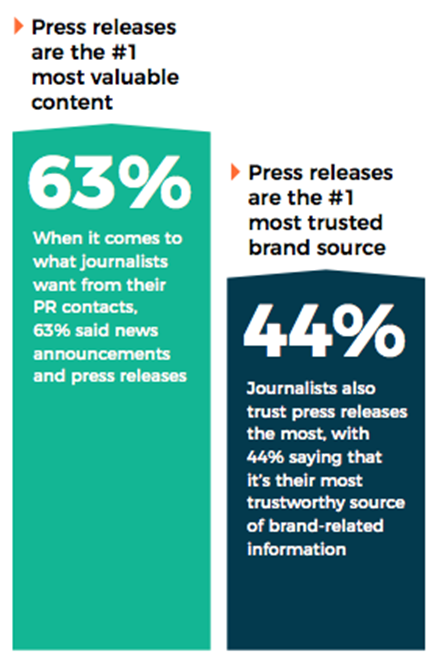
That said, grabbing the attention of journalists and reporters with your press release is not always easy. In fact, sometimes, it becomes frustrating if your product is newsworthy, but no journalist ever responds.
In such a case, you may be making mistakes when drafting your press release. Thankfully, learning how to write a press release for a product is not rocket science. In this blog, we will provide a step-by-step guide to help you write a compelling and concise press release. Let’s get started.

What Is a Product Press Release?
A product press release is a document that informs journalists and customers about your newest product offerings. It is a professional document that is meant to get the word out about the new solutions your company is presenting to its consumers. It is essentially a document released by the company when launching a new product. This initial promotion must be appealing and persuasive.
Typically, a product launch press release emphasizes the product’s specifications, pricing, availability, benefits, and other details that may be valuable to the customers. This is what makes the press release newsworthy.
Quick tip: including a value-add within the document can be really beneficial, and entice the readers. For instance, you can add a discount code for people who purchase the product when it launches.
5 Easy Tips to Draft a Product-Focused Press Release
Let us look at the five quick ways to draft a persuasive product press release.
1. Write a catchy headline
Setting up your press release for success begins with a headline. So make sure your headline is interesting and stands out from the many press releases that a journalist gets in one day.
The best tip is to keep your headline short and simple by using clear language and action verbs.
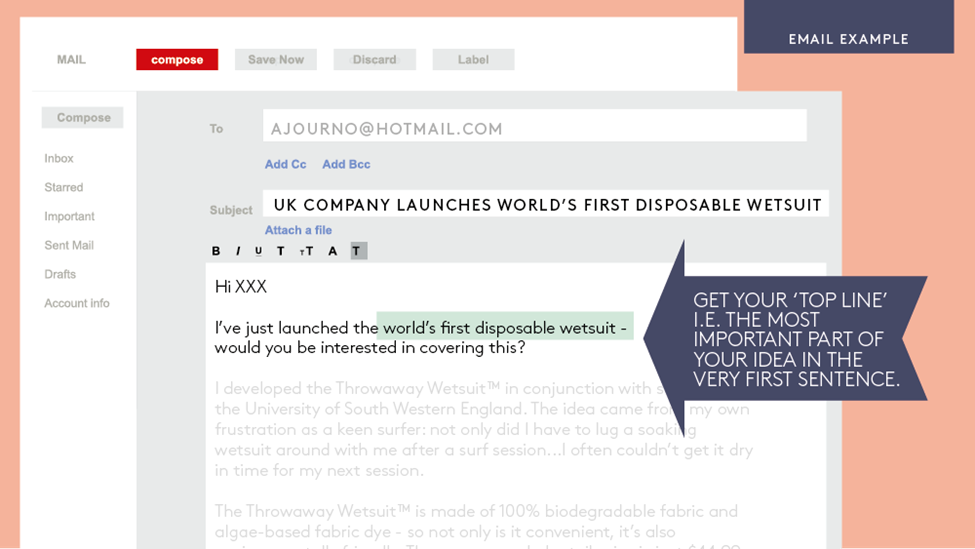
The best part about the above product press release is that the entire story is sold in the first sentence itself. And proper context is provided in the following lines, giving the journalist a clear picture of the product.
2. Provide value in the first paragraph itself
As mentioned above, journalists receive tons of press releases every day. Consequently, they are always pressed for time and want to consume information faster. So, it is advisable to share all the valuable information, including the 5 Ws (who, what, where, why, and when), of your product launch upfront.
When journalists have all the details in front of them, it is easier for them to gauge the relevance of your story for their audience. It will also result in a well-structured press release that may just increase your chances of getting featured.
3. Focus on adding interesting quotes
Once you’ve mentioned all the vital information, you can include quotes from top executives in the company. Typically, offering quotes in the second or third paragraph is a good way to frame your press release. But make sure the quote focuses on the fundamental part of the announcement.
Adding a quote enables journalists to use it for context around the announcement. It helps them paint a picture of how the specific product launch news will impact the industry and readers.
4. Offer valuable background information on the subject
Remember, a new product announcement press release should be succinct and crisp. But at the same time, adding a little background information on the subject that strengthens the narrative can be a good idea.
So, in the last or second-last paragraph, you can add some information about how your company developed the product, or its future applications. This is a great way to add value to your press release, without making it sound superfluous.
5. End with a boilerplate
Announcements that end abruptly often fail to get press mentions. Make sure your press release includes a standardized text at the end that clearly explains your company and its operations in a few lines. Include all the necessary details in plain and simple language.
Don’t forget to include a link to your company’s website and social media profiles. Quick tip: add pictures and other media to increase the efficacy of your press release.
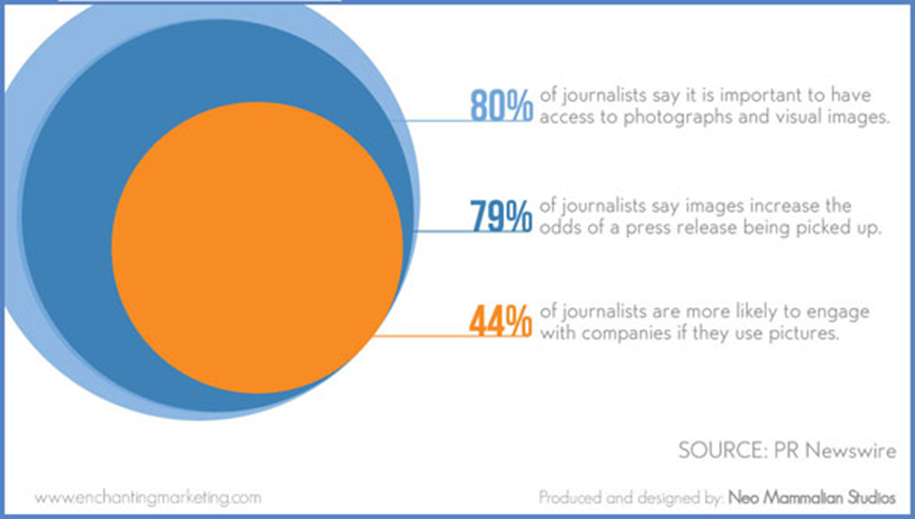
Why a Great Press Release Isn’t Enough to Get Press Coverage
You may have written an effective and well-structured press release several times and submitted it to many reporters, only to get no response. It can be extremely frustrating, isn’t it?
But the sad truth is, public relations (PR) professionals outnumber journalists by a 6:1 ratio. Plus, according to a study, journalists get an average of 300 emails each day. And most journalists only publish about two stories in a day. So, if your product launch press release does not get a response, don’t feel devastated.
That said, you must try to make your press release effective enough. Here are some common mistakes to avoid at the time of distributing your press release to different publications.
- Making your press release too long (ideally, it should be no more than 2 pages.)
- Targeting the wrong reporters or publications
- Not making the announcement newsworthy
- Not including your company’s contact information
Why a Majority of Press Releases Fail
99% of press releases fail to get a response from the reporter. Do you know why?
Well, most announcements lack structure, clarity, and most importantly, valuable details.
To help you understand better, let us look at a product press release example.
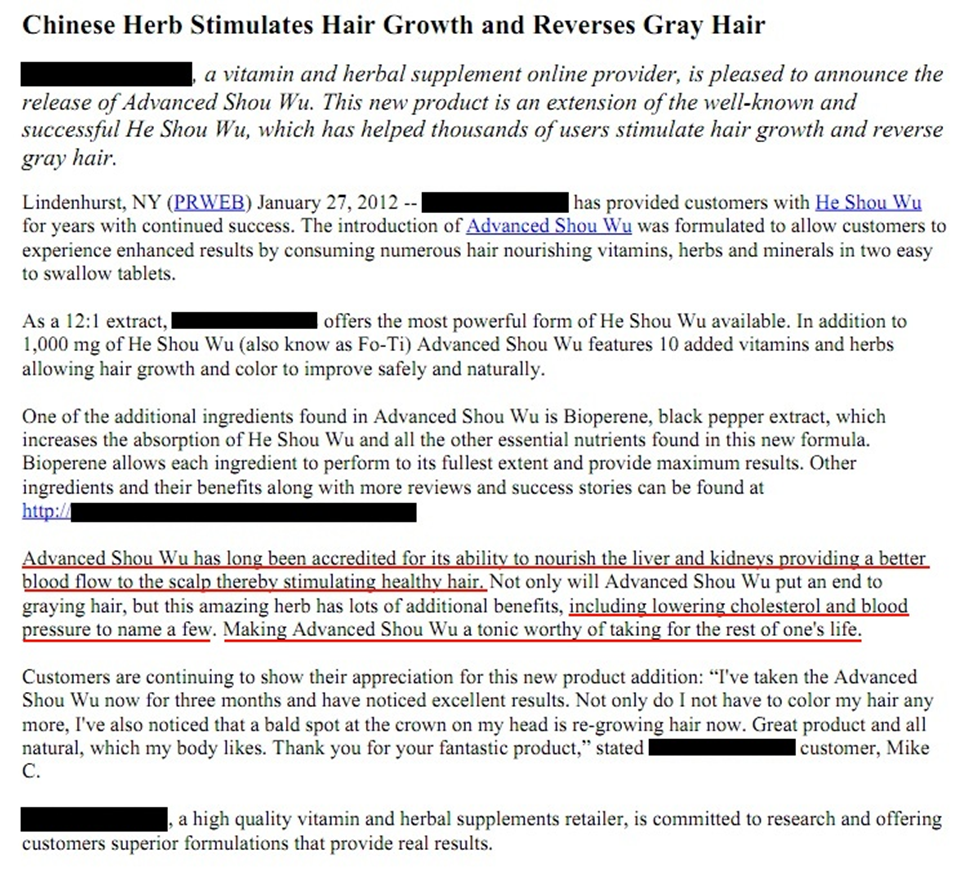
To begin with, the announcement kicks off on a bland note. There is no introduction or personalization for any particular reporter or media house. Apart from that, the text is full of grammatical errors that imply a lack of professionalism. Such press release pitches quickly disqualify you in the eyes of any reporter.
It is a good idea to perform a grammar and spell check on your press release before sending it out to any agency or reporter. If you have the funds, you can even hire a professional proofreader. Lastly, the quote in the text is not impactful enough. Also, when quoting someone, it is vital to include their full name. All of these things lacking in the aforementioned product press release example make it almost impossible for the company to get published.
Moving on, most product press release pitches look like this:
Hello Paul,
XYZ Company is launching ABC product in the coming month. I thought you might be interested in covering it.
For more details, kindly refer to our press release and media briefing guide below.
Thank you,
Jane
Although this pitch is short and concise, it will indubitably fail. Are you wondering why? Well, this pitch is all about the sender, their company, and their product. There is nothing in it for the journalist or the reader. And if this is your approach, you definitely need to stop. Or else, you have little chance of getting published.
Essentially, public relations can be understood as the process of reaching out to the right journalists within your niche and presenting them with a relevant story. It is common knowledge that different media outlets are specialized around a specific topic. In other words, not every journalist will be interested in the same press release.
So to ensure that your media pitch does not fail, you need to reach out to the right person whose interests are aligned with the contents of your pitch. Let us understand this with another example.
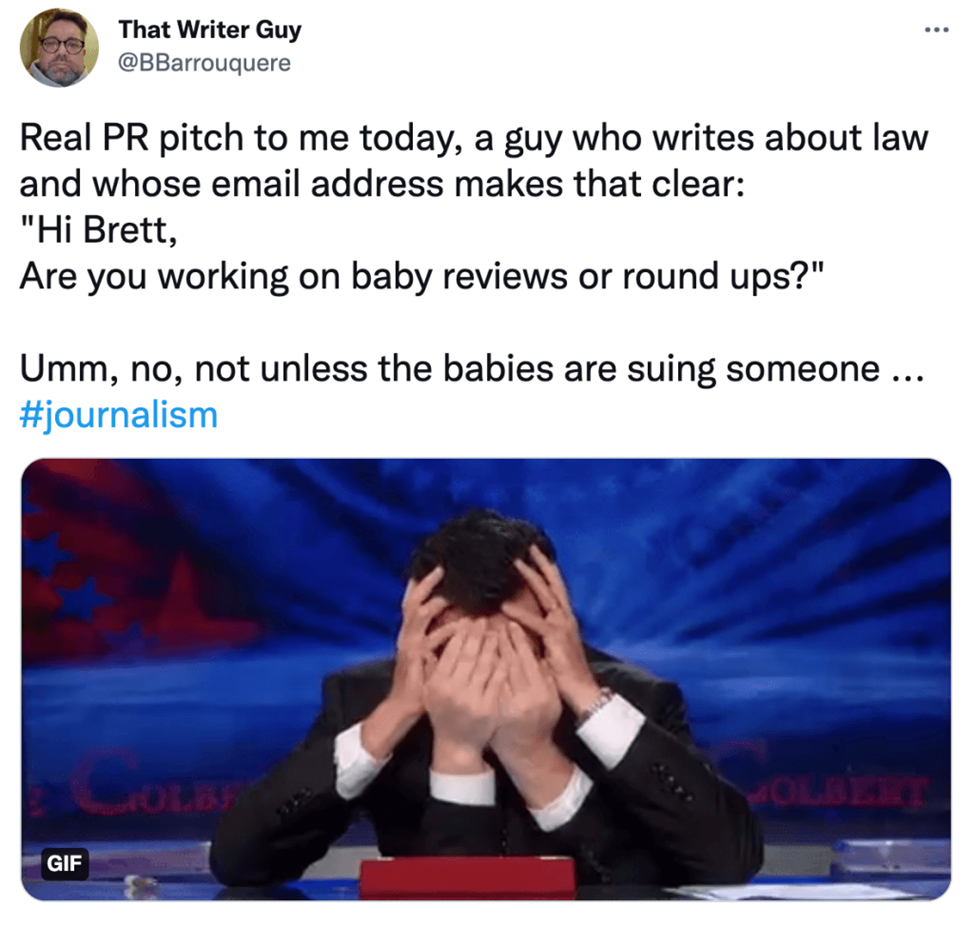
Such media pitches will seldom get a response. Thus, it is imperative to do your research and get in touch with the relevant reporters or media houses. All that being said, writing a good product press release and getting it published is not as intimidating as it may sound. And this is especially true if you follow a specific process. Follow along for a step-by-step guide on how to write a press release for a product and gain a mention in a good publication.
3 Things to Remember Before Writing a Product Press Release
If you are going to write a product press release, remember that it must be crisp, concise, and adequately structured. It must inform the media about your newest product and offer details that are accurate and newsworthy. Keeping this in mind, here are the three important things to consider before you start writing your press release.
1. It must focus on your product’s unique features
This is the foremost thing to keep in mind. While writing a product press release, you must focus on the features that stand out from those of your competitor’s products, and offer significant value to the customers.
Essentially, your press release must be built around your product’s key value proposition. And for this, it is advisable to make a list of things that make your product desirable, before you sit down to write.
2. Tell a story in your press release
Storytelling is a critical component of a product-focused press release. People don’t want to simply hear about the features of your new product. Instead, they want to know how using it can help them or change their life, how you came up with the product idea, what it does differently from its competitors, etc. And storytelling is the best way to achieve this.
Make sure that your press release is persuading or entertaining enough so that the users want to keep reading it.
3. Edit the press release carefully
Thoroughly proofreading and editing your press release is the key to success. Remember, you have to distribute your press release to different editors and media publications. And if your text contains errors or grammatical mistakes, it can spell disaster for your company.
So make sure to rigorously edit your copy before you submit it anywhere.
A Step-by-Step Guide to Getting Your Press Release Published
So by now, you know what a product press release is and the important steps to keep in mind while writing one. Now, we will provide you with a detailed guide on writing a product launch press release that will get you media coverage.
Step 1: outline your goals
Most companies skip this step, which is the primary reason why they fail to land a press mention. Before writing your press release, you must outline the goals that you want to accomplish. This is a crucial step that will help you choose the right publication.
Some of the most common goals for pitching your product press release to media are as follows:
- Gaining more customers
Often, a press mention can make your product’s sales skyrocket. It enables you to reach your target audience much faster and get them to sign up for your newest offerings.
A mention in a top publication can help you acquire more customers, provided you target the right media house.
That said, don’t just focus on pitching to the biggest publications. Instead, reach out to smaller publications within your specific niche. Such publications usually have more engaged audiences. Let us look at a press release sample for product launch.
- Boosting brand awareness
If your goal is to increase awareness around your brand, you must target big publications.
These publications are not too great when it comes to increasing click-throughs. However, a single mention by them can get you in front of a large audience base and improve visibility.
- Boosting visibility
A product press release can offer major SEO benefits. If your story gets picked by a top publication that links to your website, you will receive a lot of organic traffic.
Additionally, having the right industry-specific keywords next to your brand name can help Google’s algorithm associate your company as an authority. Consequently, it will improve your ranking on search engines.
But if this is your goal, make sure you choose publications that are relevant to your industry and business. For instance, if you are a beauty brand, a backlink from a SaaS company will barely contribute to your website’s SEO.
Step 2: understand the media landscape
The next step is to find journalists who might be interested in your press release. And it is advisable to perform this step before writing the product press release. Evaluating the influencer landscape and figuring out what type of content will work best can land you a mention in the press. With little research, you can identify journalists who have already written about your specific industry or topic. And presenting your press release exclusively to those journalists can boost your chances of getting published.
However, it is seen that most companies make several mistakes during this step, resulting in no response. For instance, many companies target the wrong beat. Essentially, a beat is a specific domain that a journalist takes care of. So, if you are sending a journalist a pitch that is not related to their beat, you have slim chances of getting featured.
Moving on, many companies also send their product press release pitches directly to the publication’s email address. But sadly, most of these emails get lost in the inbox. To increase your chances of getting featured, you must shoot an email to the journalist or writer itself.
- To identify a journalist, you can search news articles on Google that are relevant to your topic. Read some of these articles and make a note of the journalists’ names. An Excel spreadsheet with the journalist’s name and the publication against it is an effective way to keep a track of things.
- If you have the funds, you can use a media database such as Muckrack or tools like JustReachOut to identify relevant journalists.
- You can even head over to your competitors’ websites and check their media mentions. Make a list of all the journalists who have written about their products.
- Finally, get the contact information of all people on your spreadsheet. Digging social media channels such as LinkedIn is also a great way to gather contacts.
Step 3: generate content ideas
According to a study, 28% of journalists highlight that PR professionals can research well and understand their outlet better before pitching to publications. Journalists prefer specific types of content. They dread sounding salesy about a product. So, when drafting your press release, try not to make your product the center of your story. Instead, think of ways to weave a story into your content and include your product in an allied context. Here are some ways to generate great product press release ideas:
- Use exclusive data
Journalists love data. Information gathered through surveys, polls, etc., provides them with authenticity and increases your chances of getting press mentions.
- Try newsjacking
Newsjacking is the process of injecting your brand into a breaking news story to make it more attention-grabbing and relevant. For instance, if something is viral on Instagram or Twitter, you can tie your story to it to make it sound more impactful.
- Use an emotional connection
Press releases that offer an emotional element connect better with the target audience. Such articles get more social shares and traction than any other type of content.
And if the readers develop interest in your story, they are much more likely to try out your product. So, if your company has an emotional story, use it while drafting your new product announcement press release.
Step 4: build relationships
Most journalists feel it is important to build a personal connection with them before you pitch to them. Well, this should come as no surprise. Someone who knows you is much more likely to give you a press mention than someone who does not.
Now the question is, “How to build relationships with journalists?” The answer is rather simple. There are several ways in which you can reach out to journalists and reporters before you send them your pitch. Some of the best ways include the following.
- Compliment them
This is a surefire way to grab the journalist’s attention and make their day a little brighter. Most media pitches these journalists get are like cold emails. You can stand out by writing a simple email that appreciates them or their efforts.
Let’s look at an example.
Hey Shaun,
Just came across your article on the latest fintech trends for 2022. I loved the pointers that you covered in it.
Looking forward to your next article on the same subject.
Regards,
Mike
Simple, right?
- Comment on their articles
If the journalist’s blog has a comments section, you can add meaningful comments that add value to their write-up. You can share your viewpoint to appeal to the journalist and have them remember you.
- Find them on Twitter
Twitter is a great platform where journalists express their opinions. You can find your chosen journalist here, and like or Retweet their Tweets. If they have a comments section, you can add some valuable comments to grab their attention.
It is best to start engaging with a journalist at least a week prior to pitching to them. At this time, you can send them complimentary emails or like their Tweets. Typically, setting aside 30 minutes a day for this activity is sufficient.
Step 5: write your pitch
A pitch is a brief and concise message introducing your new product announcement press release story. It is advisable to use email to send your pitch to the journalist, instead of social media or making a phone call. This is because most journalists prefer communicating with PR professionals via email.
That said, every journalist receives dozens of pitches every day. They are always pressed for time. So ditch a long-winded, self-absorbed introduction to you or your business. Instead, make your pitch short, succinct, and effective, selling your story in a few words.
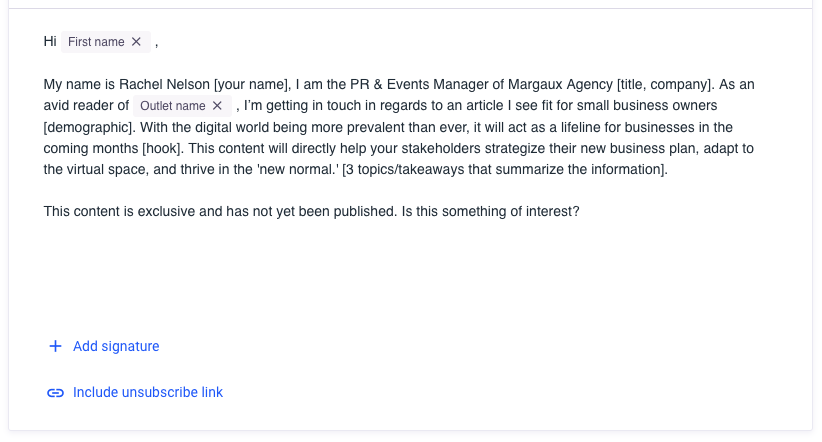
Another crucial thing to remember is that you must personalize your pitch. This will differentiate your email from the many cold pitches in the journalist’s inbox, and improve your chances of getting published. Personalizing the subject line demonstrates that you have done your homework. It shows that you are not just another PR professional who has absolutely no clue about the stories journalists are interested in.
Quick fact: most journalists prefer the pitch to be less than 200 words.
Step 6: follow up
It may so happen that you take care of all the aforementioned tips, yet your product press release fails to get a response. Don’t fret. Chances are, the journalist might have forgotten to reply or simply missed reading your email. And in such a case, it becomes crucial to follow up.
Following up is a good way to drive attention to your release, particularly if you think you have done a good job with it. But to follow up, you need to be tactful. Otherwise, you might end up sounding spammy and get blocked by the journalist. Here are a few tips to keep in mind while following up with journalists.
- Don’t spam the journalist by sending the same pitch and press release again. This will ruin your chances of getting your story published. When following up, explain to them why they should care about this story.
- Don’t send a completely new email. Simply reply to the first one so that the journalist doesn’t have to scroll down their inbox to look for the first email.
- Be polite while following up. You must respect the fact that a journalist may not be genuinely interested in your story.
- Keep the follow-up pitch shorter than the first one.
- Lastly, be prepared. If you get a positive response, make sure you have some additional information to provide the journalist with, when and if they ask for it.
Key Takeaways
- A product press release is a cost-effective way to drive attention towards your newest product solution, and attract a larger audience.
- When picked by a media publication or journalist, a press release can prove to be highly beneficial for your company.
- There are many reasons why brands distribute press releases, some of the common ones being boosting visibility, boosting brand awareness, and increasing sales.
- Writing a product press release to break crucial company news can help your business grow, but doing it right is just as important.
- A good product press release includes all the essential components, such as headline, date, body, boilerplate, and contact information. It also conveys all the significant information in the first paragraph itself.
- In order to write a compelling press release, make sure to create an attention-grabbing headline.
- Before writing your press release, it is a must to study the media landscape and choose a specific journalist that you wish to pitch to.
- Make sure your press release topic aligns with the journalist’s beat.
- Your press release must bring to light some exclusive data and statistics that make it unique and newsworthy. Your media pitch must be short, concise, and impactful.
- If you pitch a product press release to a journalist and receive no response, you must follow up with them. But make sure to not sound too pushy. Keep your language polite and respectful.
Conclusion
With so many details to take care of, writing a product press release may seem daunting. But on the contrary, it is quite simple. Once you get the hang of it, drafting an effective and well-structured press release and media pitch can get rather easy.
You can also study a press release sample for product launch. Looking at these examples, you can understand the kind of writing style that’s required in a product press release, and eventually get better at it.
Knowing how to write a product press release is a vital skill. Following the aforementioned tips can help you master the process and land mentions for your business in the press. From crafting the headline to optimizing the content for SEO, there are many little things that can mark the difference between a successful and failed press release.
FAQs
A product press release is a document that informs customers and journalists about your exciting new product. A well-crafted press release can be easily chosen by reporters and published in top publications, grabbing many eyeballs for your brand and product.
There are five steps to write a good product-focused press release.
1. Start by writing an irresistible headline.
2. Convey the vital info (what, why, where, when, who, and how) of the development in the first paragraph.
3. Write one or two interesting quotes.
4. Provide detailed background information on the product.
5. End with a boilerplate.
The five things you must include in your press release are as follows:
1. Date of the press release
2. An irresistible headline
3. Company description and relevant links
4. Relevant quotes
5. High-quality images
Ideally, a press release must be around 400 words. This primarily includes three to four short paragraphs and a couple of good quotes. If your length is exceeding this, you probably have unnecessary information that can distract the readers.
To pitch to a journalist, you must keep the following things in mind.
1. Write a catchy headline.
2. Create a relatable angle.
3. Make the pitch short, persuasive, and personal.
4. Pitch to the right journalists.
5. Follow up after some time.
Latest Blogs
Learn how to rank on AI search engines like ChatGPT, Perplexity, and Gemini by optimizing your content for authority, structure, and relevance. Stay ahead in AI-driven search with this strategic guide.
Explore the best healthcare SEO services for your medical practice. Improve online visibility and effectively reach more patients in need of your services.
Discover top social media agencies specializing in banking solutions, enhancing financial services and driving engagement.
Get your hands on the latest news!
Similar Posts

B2C Marketing
5 mins read
Top Choices for Best Content Marketing Services in B2B Industries

Artificial Intelligence
5 mins read
How A Lead Generation Specialist Can Use AI-Powered Content Funnels to Drive Conversions

Artificial Intelligence
4 mins read